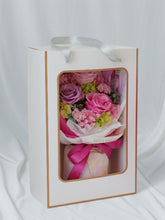Caring for your Parlour Palm

True to its name, the Parlour Palm (Chamaedorea Elegans) is a simple and elegant plant that can be found in many beautiful interior spaces. As a native to the warm and humid rainforests of Guatemala and south Mexico, they are easy to grow in tropical climates where it's mostly summer all-year round. With a maximum indoor height of about 1 - 1.5 metres, the Parlour Palm is of a perfect size to place by a sofa or chaise lounge to elevate the look of any room.
Its beauty aside, it's also notable for its air-purifying quality and low maintenance requirements. You can describe the Parlour Palm as a pinnate plant, meaning it has leaflets arranged on the opposite sides of the stem. Surprisingly, it is also capable of flowering when mature, producing small yellow flowers with sufficient light.

Sunlight
Watering
Water your Parlour Palm every week (or even two), ensuring that the top few inches of soil dry out between each watering. It also enjoys areas of high humidity, which will allow its leaves to grow larger and quicker.
Parlour Palms are relatively drought-tolerant, so it is better to err on the side of under-watering than over-watering. Do not overwater and ensure the plant has proper drainage to prevent root rot.
Repotting
As a slow-growing plant, you only need to repot your Parlour Palm about once a year, or when its roots start to poke out of its pot's drainage holes. Its ideal potting mix is a very well-draining one, ideally regular soil mixed with some peat moss (a fibrous material that holds water and nutrients in the soil) or well-draining medium.
Choose a pot that's larger (about 2 inches larger in diameter) than your current one. Ensure it has large enough or multiple drainage holes! Release your entire Parlour Palm from its existing pot by inverting it, then gently massage the root ball so that it loosens up. Trim away any mushy-looking roots.
Fill your new pot with fresh soil. You can add peat moss and perlite (a lightweight volcanic rock power that improves aeration) in equal parts to prevent the soil from compacting too much when watered. Put your Parlour Palm back in and cover its roots with the potting mix. When done, water it thoroughly until water flows out of the drainage holes. If you're not confident in doing this yourself, you can engage a repotting service!
As a cover for any basic pot that you may be using for your Parlour Palm, you can consider placing its entire whole pot into a Rattan Hand Woven Basket.
Fertiliser
You can fertilise your Parlour Palm weekly with regular plant fertiliser, or simply introduce slow-releasing fertiliser pellets into your potting mix.
Propagating
Growing a Parlour Palm from seeds is an extremely difficult (almost impossible) task for plant hobbyists. Instead, the best way for home plant-owners to propagate the Parlour Palm is by division.
Start with a healthy Parlour Palm that has several stems with their own individual root systems. Take the entire plant out of its soil and make a clean cut between the stems with a sterilised razor blade. Put the main plant back in its existing potting mix, and pot the new independent stem in a soilless potting mix (equal parts peat moss and perlite/vermiculite). Care for them as you would normally, optimally placing them in a warm and shaded spot to recover for a few weeks.
Troubleshooting
Brown spots or blotches on leaves: Overwatering, which caused root rot. The moment signs of overwatering are spotted, it's important to check for signs of root rot and to trim away any affected parts of the plant - this includes the leaves, stems and roots. Repot your Parlour Plant if root rot has started to manifest. Make sure to properly sterilise and clean your tools after this, as root rot can spread.
Leaves turning yellow: Underwatering. Start to water your Parlour Plant more frequently, ensuring that water flows freely out of your pot's drainage holes each time.
Brown tips on the leave tips: Overly-dry air. Increase humidity by placing the pot on a tray of pebbles with some water, or introduce a humidifier nearby.
Webs forming on leaves: Presence spider mites (they survive by sucking moisture out of your plant), which indicates insufficient humidity. Spider mites reproduce very quickly so it's important for you to deal with them immediately. You can get rid of them by spraying them off with water, or by applying Neem oil. You can use a spray bottle to increase humidity around your plant.
You can get a Parlour Palm here.
P.S. Do not prune your Parlour Palm! Doing so can damage it. Only cut back leaves that have been damaged or died naturally.

 Singapore
Singapore
 Japan
Japan
 Australia
Australia
 Malaysia
Malaysia
 Indonesia
Indonesia
 EU
EU










